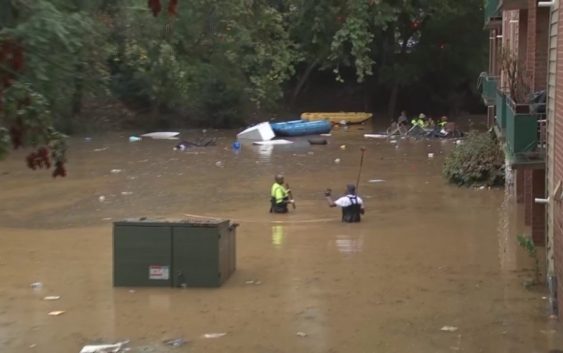- WATCH: Video Shows Confirmed Tornado touches down in Columbus County
- Residents begin clean up after storms, apparent tornado roll through NC Tuesday
- Flooding lingers in Liberty County neighborhoods near Trinity River with more rainfall expected
- North Carolina behind on hurricane preparedness, study shows
- North Carolina way behind on hurricane preparedness, study shows
Active 2021 Atlantic hurricane season officially ends

NORTH CAROLINA (WWAY) — The active 2021 Atlantic hurricane season officially concludes Tuesday having produced 21 named storms, including seven hurricanes of which four were major hurricanes.
“NOAA provided the science and services necessary to protect life and property before, during and after storms all season long,” said NOAA Administrator, Rick Spinrad, Ph.D. “From essential observations to advanced warnings to critical response actions, NOAA supports communities so they are ready, responsive and resilient to the impact of tropical cyclones each and every hurricane season.”
This year was the third most active year on record in terms of named storms, it marks the sixth consecutive above-normal Atlantic hurricane season, and this was the first time on record that two consecutive hurricane seasons exhausted the list of 21 storm names.
“The hard-working forecasters at NOAA’s National Weather Service weather and water forecast offices and national centers, along with the National Hurricane Center, provided reliable forecasts and advanced warnings around the clock to safeguard communities in the pathway of destructive storms throughout this active hurricane season,” said National Weather Service Director Louis W. Uccellini, Ph.D. “Their dedication and service are a recognized asset to the nation’s resilience to these extreme events.”
This season’s storm activity started early and quickly ramped up, as it was the seventh consecutive year with a named storm forming before the official start to the season on June 1, and held the earliest fifth named storm on record. As to why, Matthew Rosencrans, lead seasonal hurricane forecaster at NOAA’s Climate Prediction Center says, “Climate factors, which include La Niña, above-normal sea surface temperatures earlier in the season, and above-average West African Monsoon rainfall were the primary contributors for this above-average hurricane season.”
Scientists at NOAA’s Atlantic Oceanographic and Meteorological Laboratory successfully deployed five new extreme weather Saildrones to collect data at the ocean and atmosphere interface in the Caribbean and western tropical Atlantic. One uncrewed Saildrone captured the first ever video and measurements at the surface of the ocean during a major hurricane, withstanding 125-mph winds and 50-foot waves during Hurricane Sam. This data combined with data from other Saildrones, ocean gliders and aircraft-released sensors is helping NOAA to better represent the conditions that drive hurricanes within forecast models.
NOAA aircraft flew more than 462 mission hours to support hurricane forecasting and research. Data collected by these high-flying meteorological laboratories help forecasters make accurate storm predictions and allow hurricane researchers to achieve a better understanding of storm processes, which ultimately improves their forecast models. Thanks to data from these aircraft, NOAA satellites, and other sources, the National Hurricane Center accurately forecasted Hurricane Ida — which is tied for the fifth strongest hurricane to ever make landfall in the United States — hitting Louisiana as a major hurricane.
Since the launch of the storm surge warning and new inundation mapping in 2017, there have been 16 U.S hurricane landfalls, of which seven were major hurricanes. During this period, there are only seven known direct fatalities attributed to storm surge in the United States. In 2021, only one life was lost due to the storm surge accompanying the eight landfalling storms. Additionally, the delivery of Impact-Based Decision Support Services to NOAA’s core partners throughout the season helped communities better prepare for and respond to landfalling hurricanes.
In the aftermath of Hurricane Ida, NOAA Aircraft flew 32 mission hours collecting aerial damage assessment images to support emergency response efforts at NOAA’s National Ocean Service. NOAA’s aerial imagery aids safe navigation and is a critical tool in determining the extent of damage inflicted by flooding and assessing damage to major ports and waterways, coastlines, critical infrastructure and coastal communities.
The 2022 hurricane season will officially begin on June 1. NOAA’s Climate Prediction Center will issue its initial seasonal outlook in May.